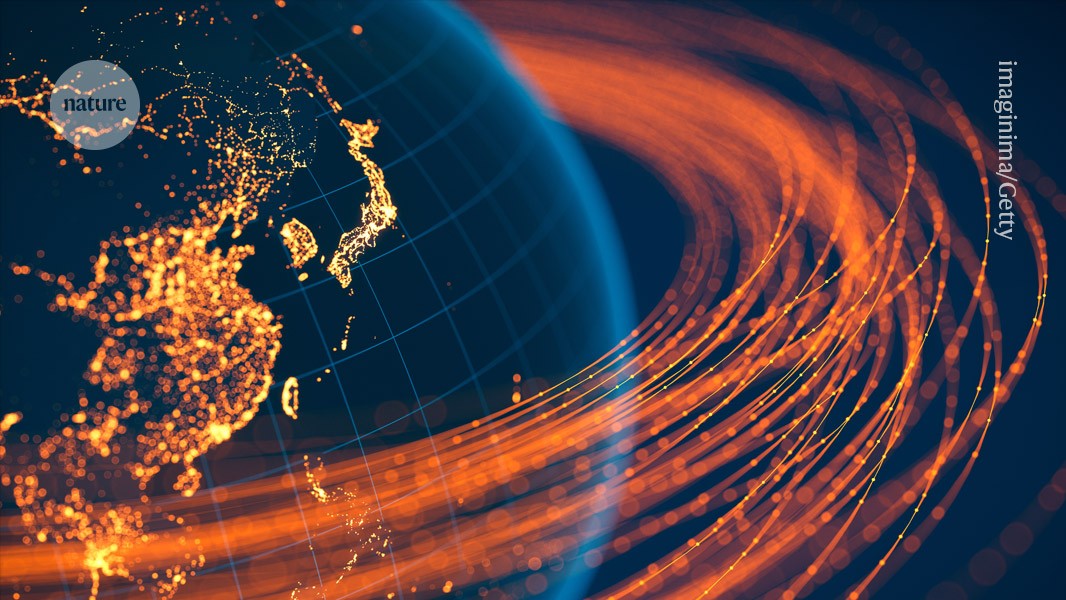
South Korea has the resources and history to collaborate with low-income countries in a mutually beneficial way.Credit: imaginima/Getty
Science is often viewed, at least in its most idealized form, as a perfect form of public knowledge that is freely available to everyone. In principle, scientists in low-income countries (LICs) can consume and build on this knowledge to produce their own research. However, the processes of training scientists, acquiring and setting up equipment and materials, and organizing resources and personnel are not straightforward or found in textbooks. They involve tacit knowledge that is often embedded in specific organizational and institutional contexts, such as experimental routines and methods passed down through experiences, which present further barriers for many resource-limited nations.
Collaborative potential
International research collaborations can provide opportunities for LICs to overcome resource limitations, increase visibility and build sustainable scientific capacity. First, such cross-border partnerships can enable researchers in low-income regions to access resources and expertise that might not be locally available. Second, given that a substantial amount of the research produced by scientists in LICs is underappreciated — for example by being cited less on average — collaborations with more-research-intensive countries can help to boost the impact of their work. At the same time, collaborating with researchers in high-income countries (HICs) might, in principle, allow researchers in LICs to find more ways of understanding problems, by combining their local contextual knowledge about a subject with the general knowledge available in HICs.
2024 Research Leaders
Finally, and perhaps most importantly, international collaboration can help to pass on informal tacit knowledge about research practices to researchers in LICs. This can include information on organizing research workflows, securing funding, choosing impactful topics and training students, issues that are essential to developing local and sustainable scientific capacity.
However, despite the importance of international collaboration in building research capacity, LICs are still struggling to play a key part in international science. A preprint posted on 16 October1 suggests that researchers in LICs are more likely than those in HICs to be included as middle authors rather than first or last authors in internationally collaborative papers. Such contributions are also more likely to be completely ignored so that those researchers receive no credit at all. For example, in clinical research, contributors from LICs are less likely to be granted authorship than are those in HICs. This is consistent with the trend of more LIC-based research projects being led by HIC institutions for ease of collecting local data. This pattern reflects deeper inequities: LIC scientists rarely lead research agendas or control project funding, limiting their ability to build independent capacity.
Honest broker
Steps are being taken to make collaboration more equitable, but the challenges might be difficult to overcome given the power and resource imbalances that exist between HICs and LICs. Often, these imbalances have deep historical roots, such as colonialism, or are being shaped by modern geopolitical trends, such as the rise of China.
With a strategic position that is not fully engaged in the US–China scientific rivalry, South Korea stands out as a country uniquely positioned to act as an ‘honest broker’ in research collaborations between HICs and LICs. Unlike many prominent powers that often dominate partnerships by controlling resources and decision-making structures, South Korea, free from colonial ties with LICs, has the potential to foster equitable, sustainable research partnerships (See ‘Index live: growing Korean research performance in an uncertain world’).
South Korea’s rapid scientific and technological development since the 1970s has endowed it with both the resources and experiences necessary to assist LICs. Furthermore, its close political relationships with the United States and European nations, along with strong geographical and historical ties to Asian science powerhouses such as China and Japan, give it a strategically advantageous position. With an increasing budget for international research collaborations, South Korea has a great opportunity to establish partnerships that are mutually beneficial, supporting LIC’s research-capacity building without imposing exploitative dynamics that echo colonial relationships, thus helping to advance scientific equity between HICs and LICs.
Previous cases have shown how successfully South Korea has already been acting in this respect in international science. One is the long-standing collaborations between South Korea and Brazil, which began in the 1990s in many fields, including nuclear energy, biotechnology, information technology and clean technologies. The resource disparities between the two nations were addressed by identifying mutually beneficial areas of collaboration — starting with nuclear energy and agricultural technology. More recently, this expanded to biomedical engineering — to tackle common health challenges such as brain diseases — and to astronomy, focusing on developing advanced optical systems for telescopes. The partnership esulted not only in numerous research publications, but also in South Korea’s inclusion as one of the first Asian participants in Brazil’s Science Without Borders programme, which facilitated the inclusion of hundreds of Brazilian students in science, technology, engineering and mathematics fields in South Korea.
Another example of South Korea’s aspiring role in promoting international science, particularly for LICs, was prominent during the height of the COVID-19 pandemic. The Korea Research Institute of Bioscience and Biotechnology and the National Research Foundation of Korea, both based in Daejeon, supported a three-year grant to build and establish an Asia–Pacific hub for Global Research Collaboration for Infectious Disease Preparedness (GloPID-R), focused on information sharing and proactive monitoring to prepare against infectious diseases. Given South Korea’s role as a hub country tasked with accommodating and addressing diverse and sometimes conflicting viewpoints from the Asia–Pacific countries, it is well positioned to lead the complex yet essential coordination of research collaborations in this area in a way that benefits the whole region.
These are just two examples, but they show how South Korea has been initiating and boldly taking opportunities to promote international collaboration, particularly with LICs. Despite this progress, it should remain vigilant against partnerships that resemble previous exploitative relationships and should strive to adopt non-discriminatory practices by including local authors who contribute to such research. Empowering these researchers can result in meaningful and productive collaborations that enhance autonomy for local scientists, boost motivation and improve research quality.
Nature Index’s news and supplement content is editorially independent of its publisher, Springer Nature. For more information about Nature Index, see the homepage.



